Before we dive into the history of Operation Torch, take a minute to check out the book I’ve written about this subject:
Introduction to Operation Torch
Operation Torch, launched on November 8, 1942, marked the Allies’ first major offensive into Axis-held territory in the North African theatre of World War II. This ambitious operation was jointly executed by American and British forces, with the primary aim of establishing a foothold in French North Africa, thereby forcing Axis powers into a two-front engagement across the European and African continents. In response to growing Soviet pressure for a Western Front, Torch was strategically designed to divert German resources, aiding the Eastern Front and relieving Soviet forces locked in brutal combat with Nazi Germany. The invasion targeted key coastal cities: Casablanca in Morocco, and Oran and Algiers in Algeria, areas under Vichy France’s control but tactically vulnerable to the Allies.
The operation brought American forces into direct conflict with German troops for the first time, shaping an essential alliance and establishing the foundation for a Europe-first strategy in the war’s later years. The Allied coalition faced logistical and tactical challenges, from navigating uncharted enemy waters to negotiating with French forces of uncertain loyalty. Operation Torch thus became a decisive and historic campaign, not only for its immediate gains but also for its demonstration of Allied coordination, testing the resolve and cooperation of American and British forces as they engaged in joint amphibious warfare at a previously unseen scale.
Origins and Background of Operation Torch
The genesis of Operation Torch can be traced to the rapidly evolving political and military landscape in Europe following Nazi Germany’s swift victory over France in 1940. The June 1940 Armistice of Compiègne effectively divided France, with three-fifths under Nazi military occupation. The remaining portion was administered by the newly established Vichy government, a regime that held nominal independence but was effectively a Nazi puppet. Vichy France retained control of France’s colonial empire, including the strategically critical territories in North Africa. However, with the French fleet and colonial forces under Vichy authority, the Allied powers grew increasingly concerned about the potential for these forces to be used against them by Axis powers.
As tensions mounted, both the United Kingdom and the United States recognized the value of French North Africa as a strategic military asset. The British, heavily engaged in the Western Desert Campaign against Rommel’s Afrika Korps, saw North Africa as a lifeline for resources and a critical buffer zone to protect their Middle Eastern territories. For the United States, the North African campaign represented a practical approach to engage in the European conflict without an immediate and costly invasion of the European mainland. Early strategic planning discussions between Britain and the U.S. considered an invasion of French territories as a means to prevent Axis powers from solidifying their position in North Africa.
Nazi Occupation and Vichy France (1940–41)
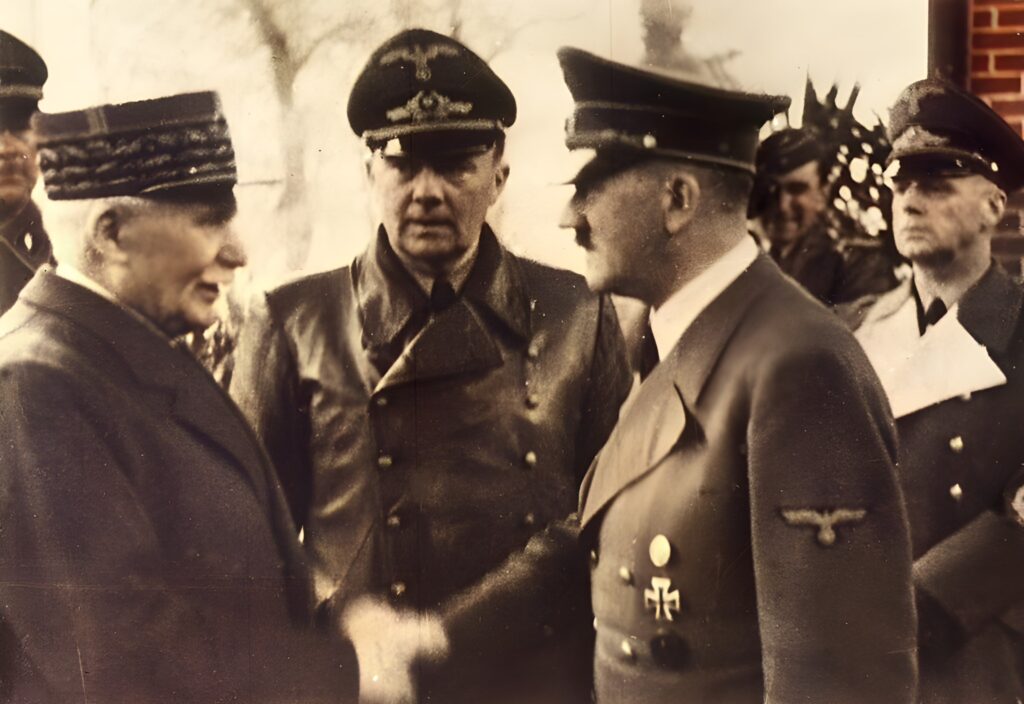
Germany’s occupation of France in 1940 brought significant implications for the balance of power in Europe. The armistice terms permitted Vichy France to maintain a limited military presence, yet constrained its operational capacity to align with German interests. France’s colonies and the substantial French navy, although technically neutral, remained under Vichy command. In an effort to secure its control of the seas, Britain took proactive measures, notably in July 1940, when Churchill ordered the attack on the French fleet at Mers-el-Kébir to prevent it from falling into German hands. This act, though vital for British security, strained Franco-British relations and complicated Allied efforts to later gain Vichy support for Operation Torch.
The Vichy government, led by Marshal Philippe Pétain, navigated a precarious neutrality between the Axis and Allied powers, with many officials reluctantly sympathetic to the Nazis. Pétain’s regime worked to preserve French sovereignty within the limited framework allowed by Nazi Germany, but it became apparent that Vichy’s allegiance could shift based on the perceived strength of either side in the conflict. By late 1941, as Axis influence grew, the U.S. and Britain saw the necessity of securing North Africa to prevent it from becoming an Axis staging ground.
Early Anglo-American Planning (1941–1942)
Throughout 1941, Allied leaders discussed various strategic options for engaging Axis forces. The British favored operations within the Mediterranean and North Africa, areas where they had existing military commitments and which were critical for securing shipping routes to the Middle East. Meanwhile, American planners, led by General George Marshall, initially considered a direct assault into France but ultimately understood that such a move was not feasible in 1942. Thus, attention turned to North Africa as a more achievable target, marking the first step in an Allied offensive against Axis forces outside of direct European territory.
By the end of 1941, Britain and the U.S. committed to collaboration, forming a Combined Chiefs of Staff to coordinate strategies and synchronize military efforts. Roosevelt and Churchill also approved the “Europe First” strategy, placing a higher priority on the European theater over the Pacific. As a result, discussions began on a large-scale operation to invade North Africa under the codename “Gymnast.” However, after U.S. entry into the war, the plan was expanded and renamed “Super-Gymnast,” with specific operational tasks later evolving into Operation Torch, solidified by mid-1942 as the Allies’ chosen approach.
Strategic Decisions Leading to Operation Torch
The strategic decisions that led to Operation Torch were shaped by military necessity and political negotiation among Allied leaders. Roosevelt and Churchill both recognized the urgency of opening a new front to divert German resources away from the Soviet Union, where the Axis offensive was progressing toward Stalingrad and threatening the eastern front. For the British, North Africa was a logical choice; it was an extension of their ongoing operations and strategically positioned to secure their empire’s trade routes through the Mediterranean. The United States, though initially inclined towards a European invasion, was persuaded to prioritize North Africa to prepare American troops for combat and demonstrate Allied resolve.
The Arcadia Conference and the Europe-First Strategy
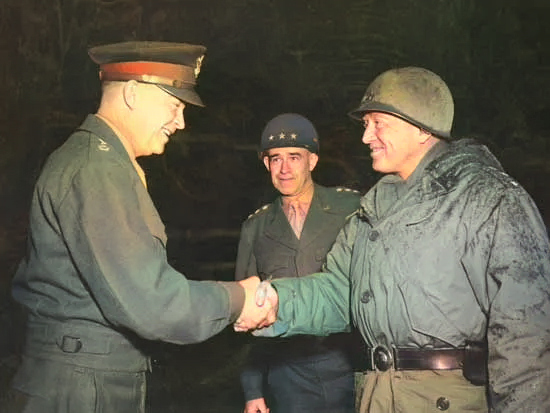
In December 1941, the first high-level meeting between British and American military officials took place at the Arcadia Conference in Washington, D.C. Here, Allied leaders confirmed their commitment to a Europe-first strategy, aiming to focus on defeating Nazi Germany before intensifying efforts in the Pacific. Roosevelt and Churchill agreed that the Allies needed to maintain a unified front and secure strategic points in the Mediterranean, preventing Axis forces from further advancing into the region. The conference’s decisions set the stage for the North African invasion as the first joint operation to test Allied coordination and establish a foothold for future European campaigns.
The Europe-first strategy also addressed concerns about the growing Soviet demands for a second front. Soviet Premier Joseph Stalin had consistently pressured the Allies to relieve the Soviet Union’s burden in the east. Torch, while not the European invasion Stalin had hoped for, demonstrated a significant Allied commitment to the war effort, reassuring the Soviets that Germany would face resistance on multiple fronts. Although Stalin was not entirely satisfied with the outcome, the North African campaign aligned with the Allied objective to weaken Axis control and lay groundwork for further engagement in Europe.
The British Preference for North Africa vs. U.S. Push for Europe
The British and American leadership had differing perspectives on how to best deploy Allied resources. Britain, already entrenched in North Africa, sought to secure the Mediterranean as a crucial trade route for its empire. North Africa held additional value as a potential launching ground for later invasions into Southern Europe. However, U.S. military leaders like General Marshall advocated for a more direct assault on Nazi-occupied France, aiming to bring a swift end to the war through direct confrontation. Roosevelt ultimately supported the North African campaign, acknowledging its strategic and logistical advantages, and used his influence to sway American military planners.
The compromise that resulted in Operation Torch was significant for both nations. Britain’s naval forces and American ground troops combined in a way that balanced both nations’ goals while uniting their strengths. Operation Torch would thus become not only a strategic maneuver but also a powerful symbol of Allied cooperation, laying the groundwork for future combined operations. The decision to prioritize North Africa also underscored the evolving Allied approach to combined arms warfare, integrating land, sea, and air power on an unprecedented scale.
Execution of Operation Torch
On the night of November 7, 1942, three main Allied task forces, codenamed the Eastern, Center, and Western Task Forces, set sail towards their designated landing zones in North Africa. Each force had unique objectives and faced distinct challenges. The Eastern Task Force, consisting primarily of British troops under the command of Lieutenant-General Kenneth Anderson, was tasked with securing Algiers. The Center Task Force, made up mostly of American forces led by Major-General Lloyd Fredendall, aimed to capture the port city of Oran. The Western Task Force, commanded by Major-General George S. Patton, targeted Casablanca in French Morocco. A total of 107,000 troops, supported by an impressive array of naval and air power, took part in the operation, making it the largest amphibious assault of the war up to that point.
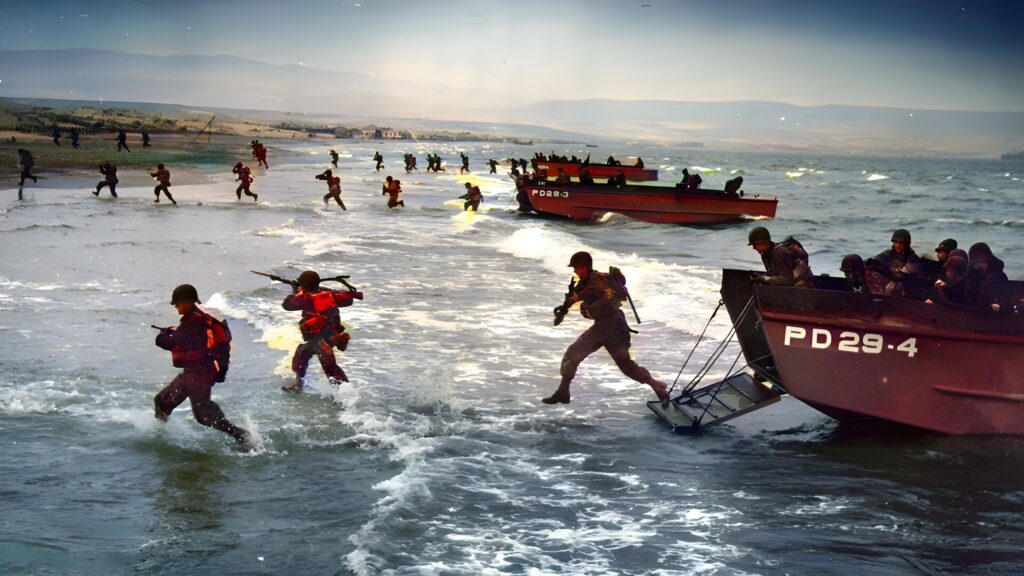
The landings themselves were met with mixed reactions from Vichy French forces, who were initially hostile and engaged the Allied forces in sporadic fighting. Algiers was secured relatively quickly, with local French commanders opting to surrender by November 9. In Oran, however, resistance was more intense, with American forces encountering significant coastal defenses. Naval battles erupted as Allied ships bombarded French positions and retaliated against coastal batteries. Despite these challenges, Oran fell to the Allies by November 10, following determined ground assaults and a series of well-coordinated air strikes that softened Vichy defenses.
Casablanca proved to be the most challenging of the three objectives. Vichy naval forces engaged the American fleet in a fierce battle, with the incomplete French battleship Jean Bart participating in the defense. After heavy bombardment and strategic troop landings led by General Patton, the French defenders eventually surrendered on November 11. Patton’s tactics and his command over the troops demonstrated the effectiveness of American planning and resolve, laying a foundation for his later campaigns in Europe.
In the days following the landings, Allied forces worked to consolidate their control over North African territory. French resistance waned after the initial conflicts, and negotiations began with key Vichy figures, leading to the eventual alignment of some French forces with the Allies. Operation Torch was successful in its objectives, effectively securing a critical supply line through the Mediterranean and setting the stage for further Allied advances into Tunisia. The operation also demonstrated the Allies’ ability to work in unison across complex military operations, a lesson that would prove invaluable in later campaigns across Europe.
Airborne Landings during Operation Torch
The airborne component of Operation Torch was a critical, high-stakes effort to establish airfield control in North Africa. These landings marked the first significant U.S. Army airborne operation in the European theater and were intended to disrupt French defenses, seize strategic airfields, and support the amphibious landings at Oran, Algiers, and Casablanca. Led by the U.S. Army’s 509th Parachute Infantry Regiment under Lieutenant Colonel Edson Raff, the airborne forces’ main objectives included securing Tafaraoui Airfield and Youks-les-Bains Airfield, both crucial for establishing air superiority in Algeria and preventing Axis reinforcements from using these key locations.
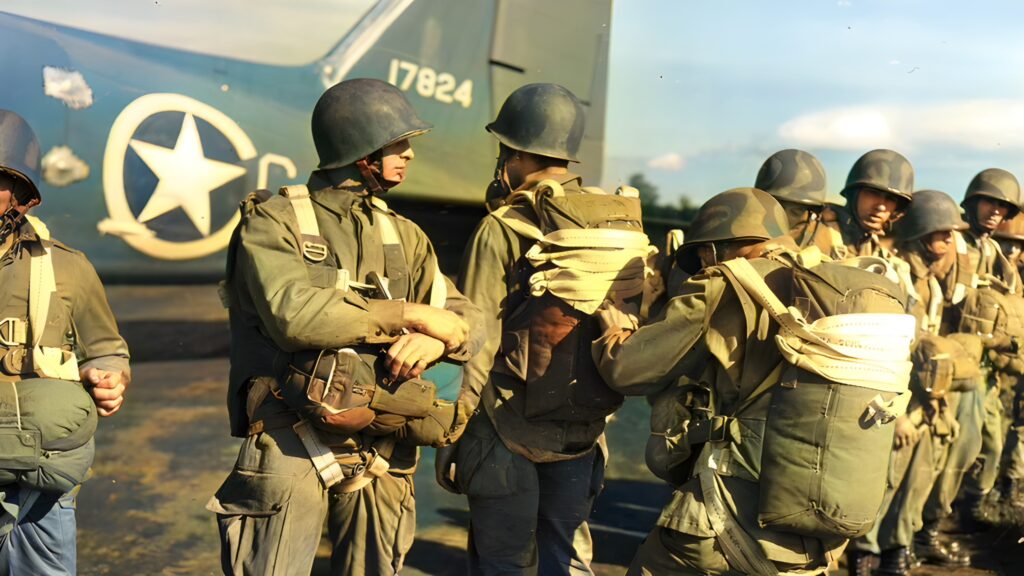
Objectives of the Airborne Landings
The primary objective of the airborne landings was to seize key airfields near Oran to provide immediate support for ground operations and ensure that Allied aircraft could safely land and refuel. Tafaraoui Airfield, located approximately 15 miles south of Oran, was chosen as a strategic target due to its proximity to the city and its suitability for heavy Allied transport and fighter aircraft. Securing this airfield would allow U.S. Army Air Force squadrons to establish a forward base and offer close air support for troops advancing on Oran. The secondary target, Youks-les-Bains Airfield near the Tunisian border, was similarly valuable, providing a base for future operations deeper into Tunisia and against Axis-held positions.
Challenges Encountered by the 509th Parachute Infantry Regiment
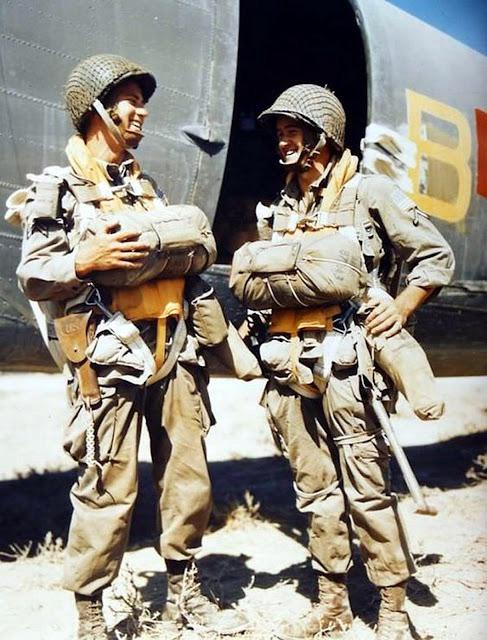
The airborne landings faced numerous operational challenges, beginning with adverse weather and navigation difficulties. The 509th Parachute Infantry Regiment took off in the early hours of November 8, 1942, from bases in England, with C-47 transport aircraft carrying hundreds of paratroopers toward their objectives. However, the night flight over unfamiliar terrain presented significant difficulties for both pilots and jumpers. Pilots struggled with navigation due to limited visibility and heavy winds, leading to inaccurate drops and widely scattered units across the Algerian countryside. Some paratroopers landed as far as 20 miles from their designated drop zones, creating immediate logistical challenges as they worked to regroup under hostile conditions.
Once on the ground, the paratroopers faced a well-prepared defense from Vichy French forces stationed at the airfields. At Tafaraoui, French defenders quickly mobilized, initiating sporadic skirmishes with the paratroopers who were still in the process of gathering and organizing their forces. Despite the disorganization and lack of heavy equipment, the 509th Regiment demonstrated remarkable resilience and determination, using light weapons and tactical maneuvers to push the French forces back and secure the airfield by mid-morning.
The Battle for Youks-les-Bains Airfield
At Youks-les-Bains, a similar airborne assault took place with the same objective of securing an airfield for Allied use. Although the scattered landings delayed their initial consolidation, the paratroopers regrouped and launched a coordinated assault on the airfield’s defenses. French forces stationed at Youks-les-Bains put up a determined resistance, but the airborne troops’ surprise assault, combined with strategic maneuvering and firepower, eventually overwhelmed the defenders. By noon on November 8, the 509th had secured the airfield, allowing Allied forces to land reinforcements and establishing a crucial base for the coming campaign in Tunisia.
Impact of the Airborne Landings on Operation Torch
The successful capture of Tafaraoui and Youks-les-Bains airfields had an immediate and strategic impact on Operation Torch. With these airfields under Allied control, U.S. and British forces were able to quickly deploy fighter and bomber squadrons, ensuring air superiority over North African skies and providing essential air cover for advancing ground forces. These early air assets played a crucial role in repelling French counterattacks and countering Axis air reconnaissance and bomber missions. The airborne operations, though fraught with logistical and tactical challenges, demonstrated the potential of airborne forces to seize strategic assets behind enemy lines, an approach that would become foundational in future Allied operations.
The airborne landings during Operation Torch set an important precedent, proving the value of paratrooper units in achieving rapid, strategic gains with limited resources. The lessons learned regarding navigation, equipment needs, and airborne coordination informed the development of future large-scale airborne missions, including Operation Husky in Sicily and the Normandy landings. The valor and adaptability of the 509th Parachute Infantry Regiment during Torch established them as pioneers in airborne warfare and underscored the importance of airfield control in the broader Allied strategy to liberate North Africa.
Ranger Operations during Operation Torch
As part of Operation Torch, the newly formed U.S. Army Rangers played a critical role in achieving key objectives and supporting the larger amphibious and airborne landings. The 1st Ranger Battalion, under the command of Major William O. Darby, was tasked with capturing strategic coastal defenses and fortifications to aid the main Allied forces in securing key landing zones. Ranger operations during Torch showcased the unit’s specialized training and combat effectiveness, as well as their ability to carry out high-risk missions that required speed, precision, and adaptability.
Objectives of the Ranger Assaults
The primary objectives assigned to the Rangers during Operation Torch included neutralizing heavily fortified coastal batteries, capturing critical points along the coast, and securing pathways for the Allied forces advancing from the sea. In particular, the Rangers were tasked with capturing key points near the city of Arzew, east of Oran, where a number of coastal artillery positions threatened the safety of the landings. Securing these batteries was crucial for the safety of the Center Task Force, as these guns had the potential to inflict serious damage on the Allied ships approaching Oran.
Another objective of the Rangers was to clear pathways inland, allowing Allied forces to advance more efficiently from the beaches to engage Vichy French forces defending Oran. This required the Rangers to utilize stealth, surprise, and close-quarters combat techniques, drawing on the specialized training they had undergone in preparation for Torch. The operation not only tested the Rangers’ ability to execute their tactical training under real combat conditions but also set the stage for future commando-style operations throughout the war.
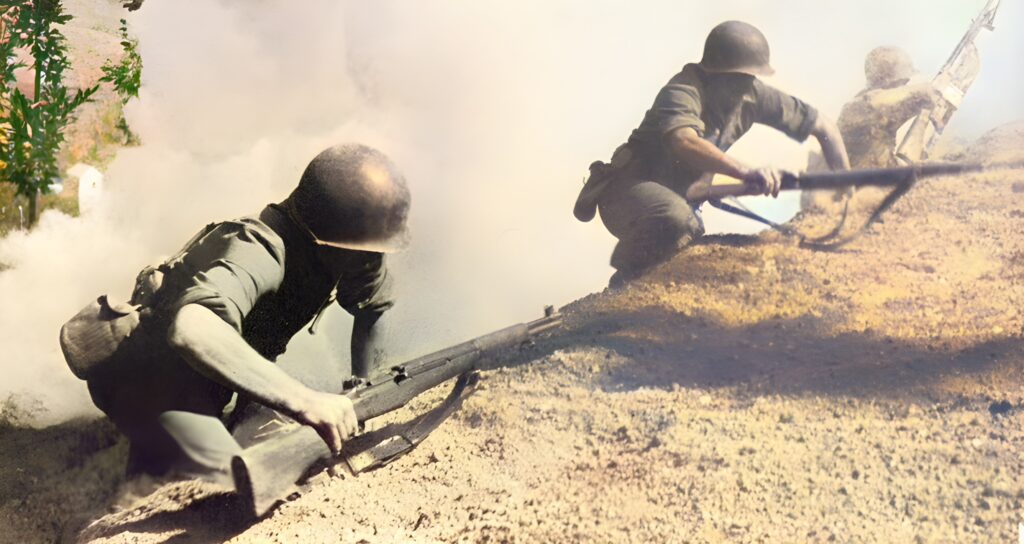
The Assault on the Coastal Batteries at Arzew
In the early hours of November 8, 1942, the 1st Ranger Battalion launched a coordinated assault on the coastal artillery positions at Arzew. Arriving by landing craft, the Rangers moved quickly to approach the positions undetected, relying on the element of surprise to neutralize the French defenders before they could respond. In a carefully planned assault, the Rangers stormed the coastal battery at Fort du Nord, utilizing grenades, small-arms fire, and hand-to-hand combat to overcome the defenders. The operation was a success, with the Rangers capturing the position swiftly, minimizing casualties among their ranks, and silencing the battery before it could inflict any damage on the incoming Allied ships.
Following their success at Fort du Nord, the Rangers continued their mission, advancing to the second key position at Fort de la Pointe. Here, they faced stiffer resistance, with well-entrenched French forces defending the position. Despite the increased resistance, the Rangers employed close-quarters combat tactics to capture the fort, clearing out bunkers and securing the site by mid-morning. Their swift and decisive actions at Arzew effectively eliminated the coastal artillery threat, ensuring safe passage for the main landing forces heading toward Oran.
Impact of Ranger Operations on the Success of Operation Torch
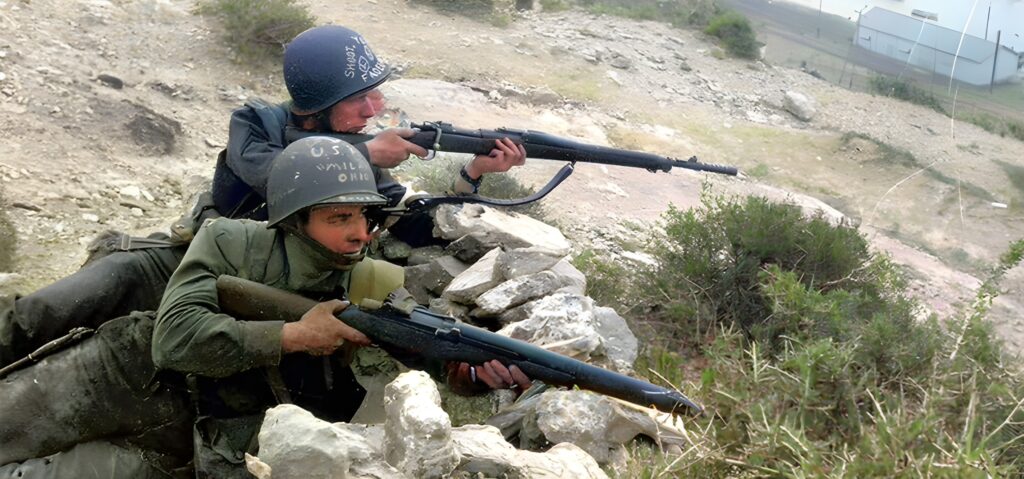
The actions of the Rangers during Operation Torch had a profound impact on the success of the overall mission. By securing and neutralizing key coastal defenses at Arzew, the Rangers enabled the Center Task Force to carry out its landings with reduced opposition from French coastal artillery, preventing potential losses among the landing troops and supporting naval forces. Their actions exemplified the value of specialized assault units capable of rapid, precise attacks against heavily fortified positions, an approach that would become a hallmark of Ranger operations throughout the war.
The success of the 1st Ranger Battalion during Torch demonstrated the effectiveness of elite units in achieving high-risk, strategically important objectives that standard infantry units might not have been equipped to handle. The operation helped establish the Rangers’ reputation as a highly skilled and adaptable fighting force, paving the way for their expanded role in Allied campaigns, including subsequent missions in North Africa, Sicily, Italy, and Normandy. Their successful missions during Torch provided valuable lessons on infiltration tactics, close-quarters combat, and coastal assault strategies that would shape future Ranger operations and influence the development of Allied special forces.
The Aftermath of Operation Torch
The successful execution of Operation Torch in November 1942 had immediate and far-reaching consequences for the Allied forces, the Axis powers, and the overall trajectory of World War II. By securing critical positions in North Africa, the Allies were able to establish a new front that diverted Axis resources and paved the way for further advances into Tunisia, Sicily, and eventually mainland Italy. While the landings in Morocco and Algeria marked a significant victory, the campaign to liberate North Africa was far from over. Torch laid the groundwork for the extended Tunisia Campaign, which became the next major objective for the Allies in the region.
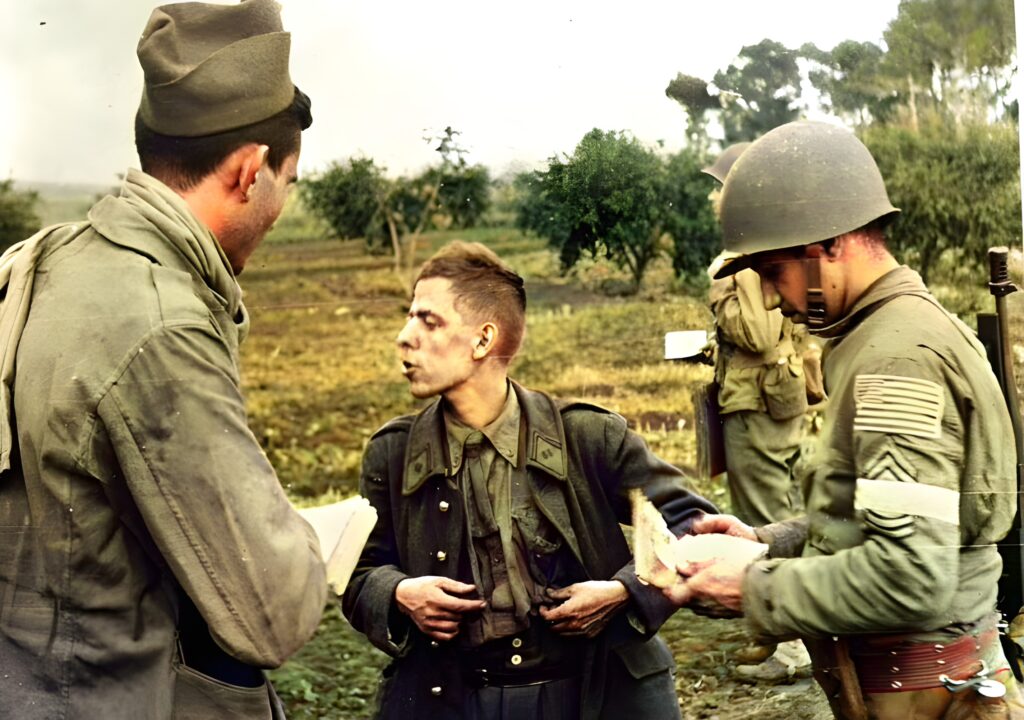
Following the initial landings, Allied forces turned their attention toward Tunisia, where Axis reinforcements were rapidly establishing strongholds in key cities, including Tunis and Bizerte. German Field Marshal Erwin Rommel, leader of the Afrika Korps, had retreated into Tunisia after a series of defeats by the British Eighth Army in Egypt. In response, the Allies launched a multi-pronged campaign to push Axis forces out of North Africa entirely, leading to a series of fierce battles in challenging desert and mountainous terrain. Notably, the Battle of Kasserine Pass in early 1943 tested the resilience of inexperienced American troops, revealing weaknesses in Allied command and tactics but ultimately strengthening Allied coordination as they adapted to Rommel’s tactics.
The Tunisia Campaign lasted until May 1943, with both sides suffering heavy casualties in intense ground and air battles. However, by mid-1943, the Allies had gained the upper hand. The final Axis surrender in North Africa on May 13, 1943, led to the capture of over 250,000 Axis troops, marking the end of German and Italian influence in North Africa and providing the Allies with a staging ground for further operations in the Mediterranean.
Political Repercussions and Shifts in French Allegiance
Operation Torch also brought significant political shifts, especially concerning France’s role in the Allied effort. During the operation, Admiral François Darlan, a high-ranking Vichy official, defected to the Allies and ordered Vichy French forces to cease resistance in North Africa. Though initially controversial, Darlan’s decision eased French collaboration with the Allies and prevented extended combat with Vichy forces, helping consolidate Allied control over Morocco and Algeria. Following Darlan’s assassination in December 1942, General Henri Giraud, a staunch anti-Nazi French leader, assumed command of French forces in North Africa and pledged full cooperation with the Allied war effort.
This collaboration not only strengthened Allied forces but also gradually united Free French and former Vichy forces under Charles de Gaulle’s leadership. By 1943, French units in North Africa were integrated into Allied forces, reinforcing their strength in North Africa and later in European campaigns. The events surrounding Torch marked a decisive shift in France’s position in the war, ultimately aligning the French military and government with the Allied powers.
The Broader Impact of Torch on Allied Strategy
Operation Torch was a turning point in the Allied war strategy, underscoring the effectiveness of amphibious and airborne operations that would become central to the Allied approach in Europe. Torch provided valuable experience in coordinating complex multi-national operations, reinforcing the need for unified command structures, which would be crucial for the upcoming invasions of Sicily (Operation Husky) and Normandy (Operation Overlord). The success of Torch also validated the “Europe First” strategy, solidifying the Allies’ commitment to defeating Germany before shifting their primary focus to the Pacific Theater.
The operation also demonstrated to Axis powers that the Allies could establish new fronts, compelling Germany and Italy to divert forces away from the Eastern Front and other theaters to defend their positions in the Mediterranean. This diversion weakened German efforts on the Eastern Front, where Soviet forces were beginning to gain ground after the Battle of Stalingrad. The Axis loss in North Africa marked the first major defeat of German forces in the West, boosting Allied morale and providing a strategic advantage in planning future offensives across Southern Europe.
Legacy of Operation Torch in World War II
Operation Torch’s legacy extends beyond its immediate military success. As the first major joint operation between American and British forces, it marked the beginning of a cohesive Allied partnership that would define the remainder of the war. The operation laid the foundation for Allied cooperation, refined the logistics of large-scale amphibious assaults, and underscored the importance of rapid deployment and control over key geographical locations. By eliminating Axis forces from North Africa, the Allies secured vital supply lines, bolstered their control over the Mediterranean, and set the stage for future campaigns that would eventually lead to the liberation of Europe.
Overall, Operation Torch remains a testament to Allied adaptability, determination, and strategic foresight. Its success symbolized the growing strength of the Allied coalition and highlighted the effectiveness of combined operations that integrated land, air, and sea forces—a strategy that would become a hallmark of Allied victories in the years to come.
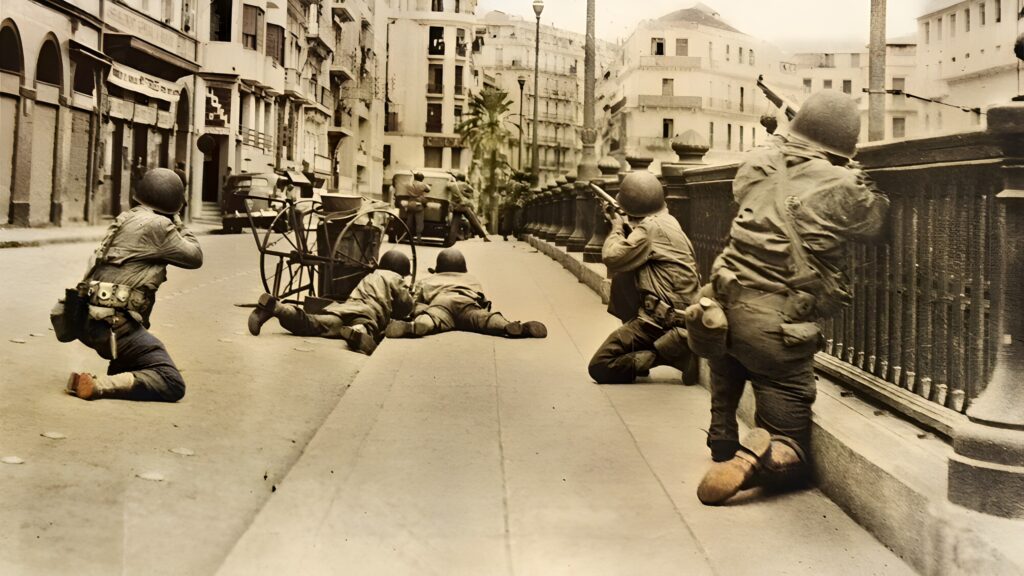

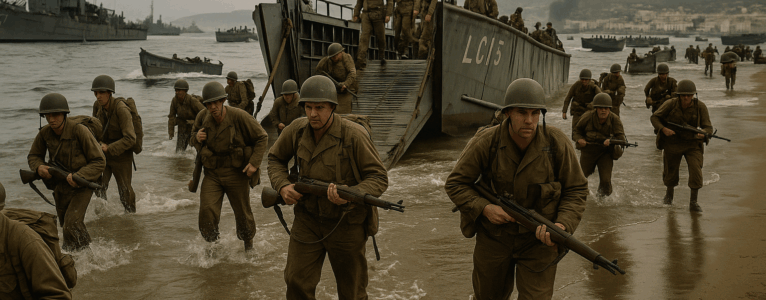
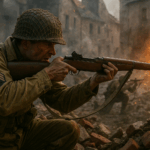
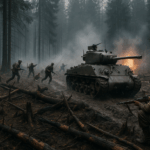
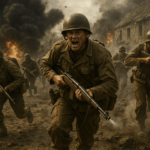
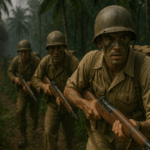
Pingback: Pre-Order Now: Step Into the Fire With the First to Fight - Rowan Drake